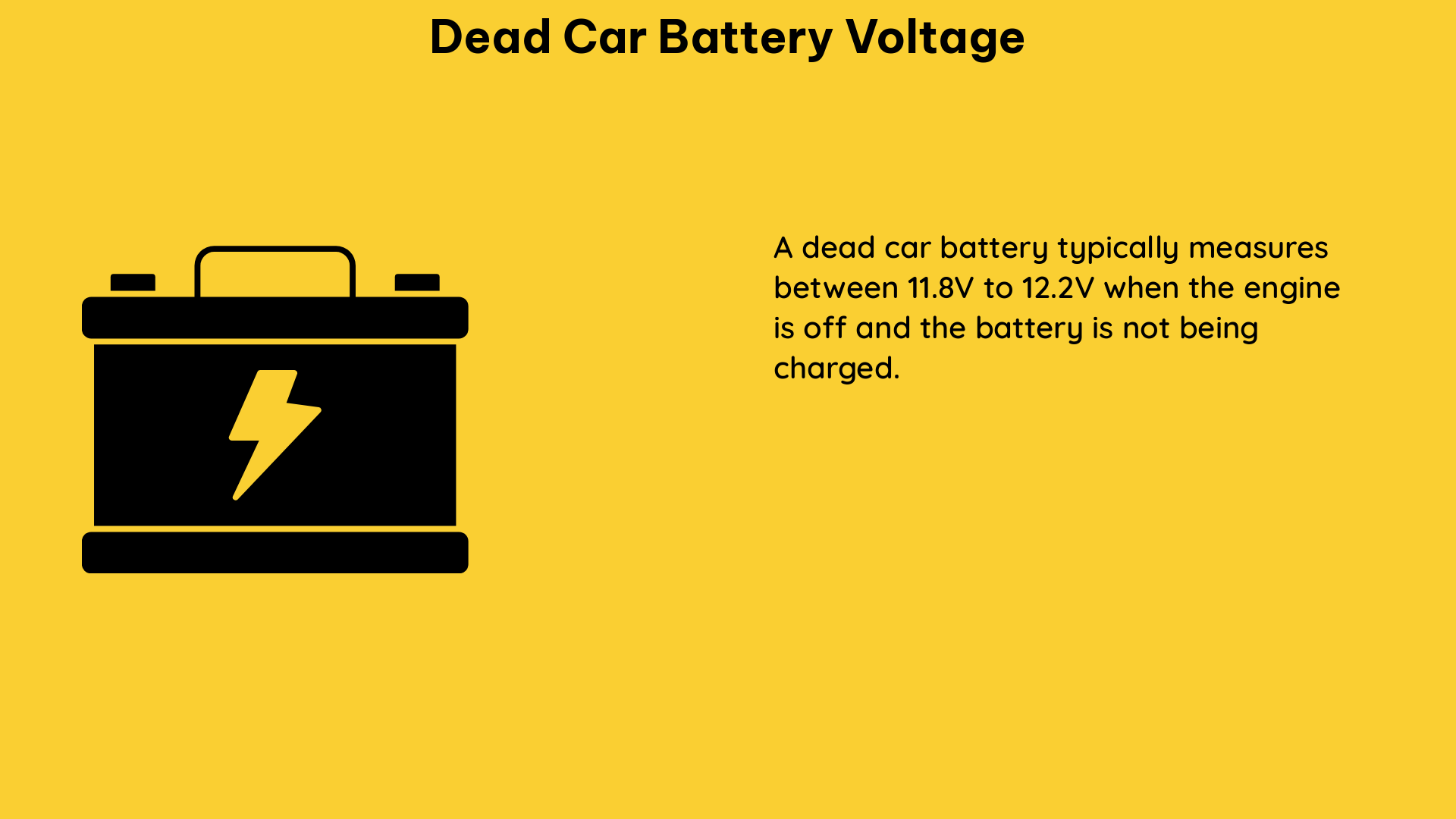A car battery is the heart of a vehicle’s electrical system, providing the necessary power to start the engine, run the lights, and power various electronic components. When a car battery is dead, it typically has a voltage below 12.0 volts, indicating that it has lost its ability to hold a charge and needs to be replaced or recharged. Understanding the voltage levels of a car battery is crucial for maintaining the health of your vehicle’s electrical system and ensuring reliable performance.
Voltage Levels of a Car Battery
The voltage of a car battery can vary depending on its state of charge and overall condition. Here’s a breakdown of the typical voltage levels:
| Battery Condition | Voltage Range |
|---|---|
| Fully Charged | 12.6 volts or higher |
| 75% Charged | Around 12.4 volts |
| Discharged | 12.2 volts or less |
| Dead | Below 12.0 volts |
A fully charged car battery should measure at 12.6 volts or higher, while a battery with a 75% charge is typically around 12.4 volts. When the battery voltage drops below 12.2 volts, it is considered discharged and may not have enough power to start the engine.
Causes of a Dead Car Battery

There are several reasons why a car battery can become dead or discharged:
-
Overuse or Excessive Drain: If the battery is used to power too many electrical components or the vehicle is left with the lights or accessories on for an extended period, the battery can become drained and unable to hold a charge.
-
Sulfation: Over time, the lead-acid battery can develop a buildup of lead sulfate crystals on the plates, which can reduce the battery’s capacity and prevent it from fully charging.
-
Acid Stratification: When a battery is left in a car, the sulfuric acid in the electrolyte can settle at the bottom of the battery, causing the upper half of the cell to be starved of acid. This can lead to reduced performance and a lower cold cranking amps (CCA) rating.
-
Age and Wear: Car batteries have a limited lifespan, typically around 3-5 years, depending on usage and environmental conditions. As the battery ages, its ability to hold a charge diminishes, eventually leading to a dead battery.
-
Extreme Temperatures: Extreme hot or cold temperatures can also contribute to a dead battery by affecting the chemical reactions within the battery and reducing its capacity.
Measuring the Voltage of a Car Battery
When measuring the voltage of a car battery, it is essential to do so directly on the battery posts, rather than on the wires or terminals. This is because a poor battery connection or a dead cell can cause inaccurate readings.
To measure the voltage of a car battery, follow these steps:
- Turn off the engine and all electrical accessories in the vehicle.
- Set your multimeter to the DC voltage setting.
- Attach the positive (red) lead of the multimeter to the positive (+) battery post, and the negative (black) lead to the negative (-) battery post.
- Read the voltage displayed on the multimeter.
If the battery voltage is below 12.0 volts, it is considered dead and will need to be recharged or replaced.
Correcting Acid Stratification
If a car battery is experiencing acid stratification, where the sulfuric acid in the electrolyte has settled at the bottom of the battery, there are a few steps you can take to correct the issue:
-
Allow the Battery to Rest: Let the battery sit for a few days, allowing the electrolyte to naturally mix and distribute the acid throughout the cells.
-
Tip the Battery on Its Side: Carefully tipping the battery on its side can help mix the electrolyte and redistribute the acid.
-
Perform an Equalizing Charge: An equalizing charge, also known as a “deep cycle” charge, can be used to mix the electrolyte through electrolysis. This process involves charging the battery at a higher voltage for a longer period, typically around 14.4-14.8 volts for 4-8 hours.
It’s important to note that attempting to correct acid stratification should be done with caution, as improper handling or charging can damage the battery. If you’re unsure about the process, it’s best to consult a professional or refer to the battery manufacturer’s recommendations.
Conclusion
Understanding the voltage levels of a car battery is crucial for maintaining the health of your vehicle’s electrical system. A dead car battery typically has a voltage below 12.0 volts, indicating that it has lost its ability to hold a charge and needs to be recharged or replaced. By measuring the battery voltage directly on the posts and addressing any issues like acid stratification, you can ensure your car’s battery is in optimal condition and ready to provide reliable power when you need it.
References:
- Battery Voltages: Is Mine Dead?
- Acid Stratification and Surface Charge
- How Bad Is It to Undervoltage a 12 Volt Lead-Acid Battery?
- Measuring Voltage of a Charging Battery
- Second Life Storage

The lambdageeks.com Core SME Team is a group of experienced subject matter experts from diverse scientific and technical fields including Physics, Chemistry, Technology,Electronics & Electrical Engineering, Automotive, Mechanical Engineering. Our team collaborates to create high-quality, well-researched articles on a wide range of science and technology topics for the lambdageeks.com website.
All Our Senior SME are having more than 7 Years of experience in the respective fields . They are either Working Industry Professionals or assocaited With different Universities. Refer Our Authors Page to get to know About our Core SMEs.